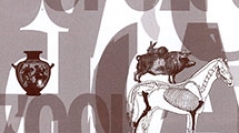

 Anthropozoologica
48 (2) - Pages 341-354
Anthropozoologica
48 (2) - Pages 341-354The presence of animal bones in human graves may often represent the ritual deposition of alimentary offerings for the dead. In fact, several ancient cultures believed in the perpetuation of earthly life activities and necessities in the afterlife. This essay presents the methodological aspects and the results of the archaeozoological analyses carried out on the 39 graves examined so far in the Etruscan-Celtic necropolis of Monterenzio Vecchio (Bologna, Northern Italy). The study of the animal bone remains points to a very high standardization of meat offering preparatory practices and their presentation inside the graves. The meat portions were always composed of a few adjoining ribs from a single young porker (Sus domesticus). The distribution of the bone remains and the lack of manifest stripping traces on the surface, in spite of evidence for meat cooking, exclude any possible interpretation of these findings as refuse from a hypothetical funerary banquet. The spatial and functional correlation between data from faunal and taphonomic analyses, the burial features and grave goods denote obvious symbolic connotations related to funerary rituals. The generalized presence in the Monterenzio Vecchio graves of highly standardized alimentary offerings, generally placed in funerary pottery, seems to demonstrate the existence of a well-defined “food of the dead”.
Northern Italy, Etruscans, Celts, funerary customs, food preparation